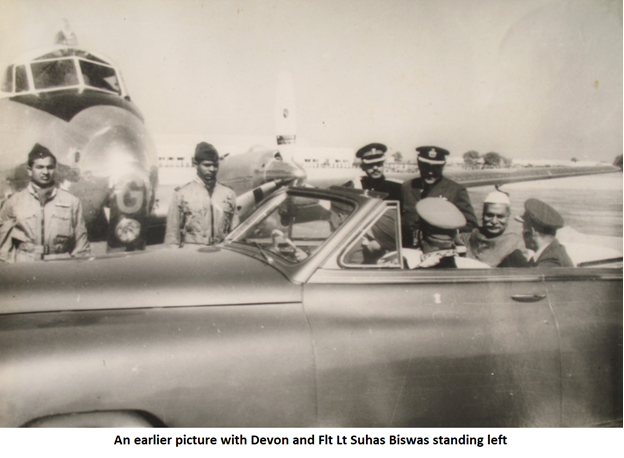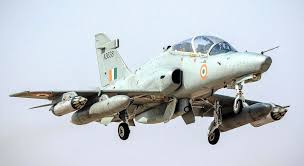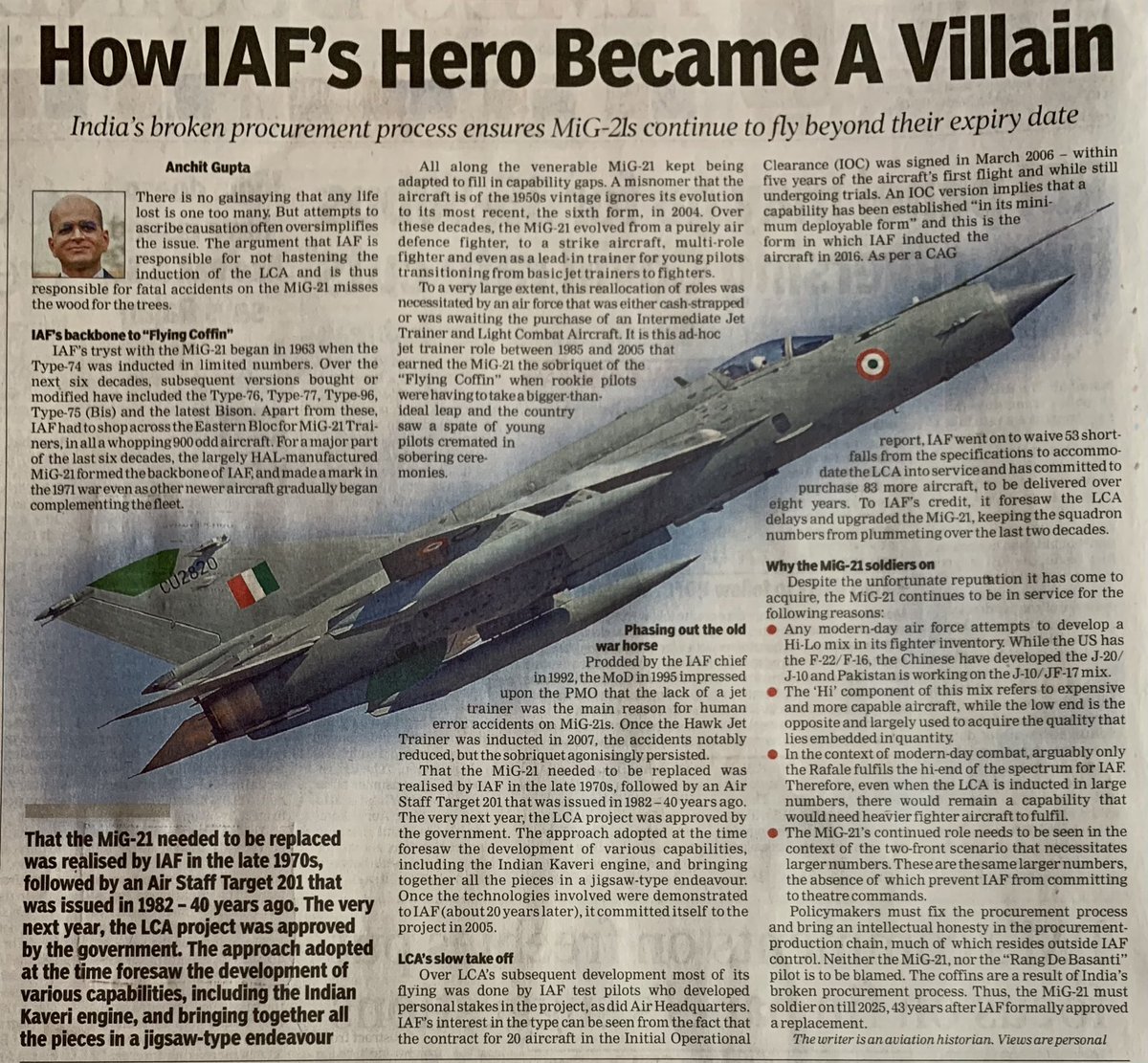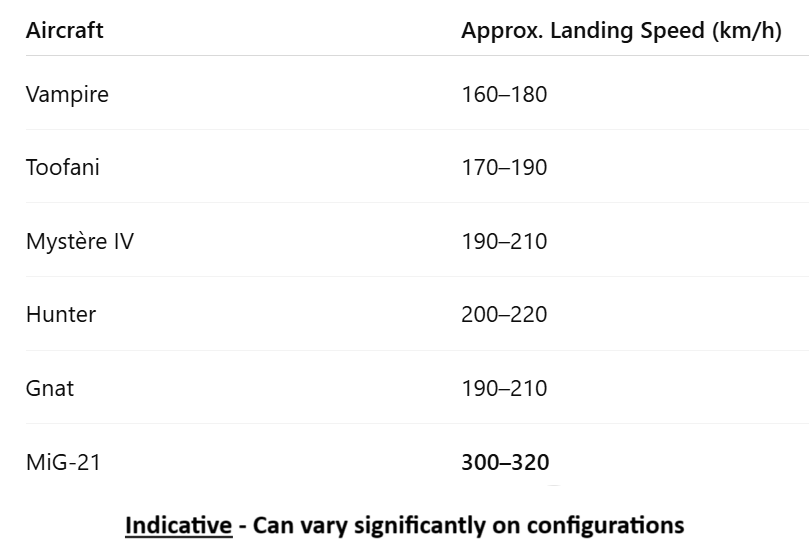De Havilland Devon (also called Dove) was the first Transport aircraft acquired by @IAF_MCC post-independence. 22 a/c served in 6 units across 39 years (1948 to 1987). In its IAF colours, this pocket-sized bird has quite a story to tell. #IAFHistory (1/24) 

de Havilland DH.104 Dove was a short-haul ac used both by airlines & military. Considered to be one of Britain's most successful postwar civil designs, over 500 ac were manufactured btwn 1946 & 1967. RAF, RIAF and RNAF purchased the modified variant “C Mk 1” in the late 1940s. 2/ 

It had two things going for it – The first British transport with a tricycle undercarriage & a braking propeller. Powered by two 330/400 hp Gipsy piston engines, seating max of 11, it had a max speed of 317 Km/h, max ceiling of 20K ft and range of 1,600 km at full payload. 3/
Indian commercial airlines of the day also acquired a few ac. The first Devon was sadly lost while being delivered to India. Note India’s map on the livery on the nose which has a map of undivided India. 4/ 

The IAF acquired a few of these aircraft in the years to come. VT-CTG was acquired in March 1952 from the Govt of Madras, while VT- COV, owned by Airways (India) Ltd was acquired later and carried the serial IW-1658 in the IAF. 5/ 

The first four ac acquired by IAF carried the serial numbers HW201 – 204. All tpt types were allotted the serial Nos H’X’-201 to H’X’ -997, with X being different for different types of aircraft. The first Devon in the IAF went to the AirHQ Comm sqn in March 1948. 6/ 

Devon was acquired primarily to undertake “Liaison & communication” duties i.e., it was meant to ferry VIPs. Till Oct 1947, this role was being performed by Dakotas of an RAF unit at Palam called AirHQ (India) Communication Sqn - manned & equipped by the RAF. 7/ 

With the RAF unit leaving in Nov 47, this role was taken over by the newly raised AirHQ Comm Sqn, IAF. The unit was initially equipped with ageing Airspeed Oxfords transferred from the only transport Sqn in IAF then – 12 Sqn, which was itself fg Dakotas in the Kashmir War. 8/ 

Replacing the Oxfords, the Devon fitted the need well – It came from UK, was not as large as a Dakota, seated just enough to meet its primary role and cost much lesser to fly for a newly independent country that had to be financially prudent. 9/ 

Early years for the VIP-bearing Devon were challenging indeed. On 29 Mar 49, a Devon piloted by Flt Lt KG Bhimrao with Sardar Vallabhai Patel, his daughter & Maharaja of Patiala on board force landed near Shahpura about 65 km north of Jaipur. Thankfully, no one was hurt. 10/ 

Flt Lt Bhimrao received an appreciation-on-record from the Constituent Assembly—an honour never given again. A qualified instructor from UK, he force-landed the ac on a public road after losing both engines one after the other. The aircraft was written-off. 11/ 

By 1950, IAF had 20 odd Devons. 2 Devons & 4 Dakotas served the AirHQ Comm Sqn till 1955. Devons also became the mainstay of Communication flights across the various commands in the IAF. They also served with 102 Flt & 106 Sqn for Recce duties. 12/ 

-ve headlines contd to bedevil the Devon. On 8 Jan 51, F/O FD Irani was flying Lt Gen DR Thapar & Himmatsinghji (Dy Def Minster) in HW-520. Once again, near Jaipur, the ac crash-landed after the engines “fell off” & the ac hit a building. Yet again, everyone walked off unhurt.13/
On 3 Feb 1952, HW-516 Gen Thimayya, Lt. Gen Shrinagesh, Maj Gen SPP Thorat and two Brigadiers had to crash land near Lucknow. The port engine caught fire and fell off. Flt Lt Suhas Biwas was able to bring it down in fading light and everyone walked unscathed again. 14/ 

Flt Lt Biswas was awarded the First Ashoka Chakra to an IAF officer. Air Mshl Subroto Mukerjee, had the passenger chairs removed from the wrecked Devon and presented it to each of the survivors of the crash with a Brass Plate mentioning the circumstances of the crash. 15/ 

This spate of accidents, involving the top brass had the govt coming up with risk mitigation plans namely to put a stop to senior brass traveling in the same aircraft. These rules would remain in place for decades to come. 16/ 

12 Sep 1957 saw the first and only fatal accident occur on the Devon. Flying in the Nilgiris, S/L Biswas (Same officer who had earlier got Ashok Chakra) struck a hill in the night. He along with F/L WA Serrao and F/O Gurdial Singh perished in this accident. 17/ 

@anandeep_pannu best explains the accidents – “The Devon was a great ac, if slightly underpowered on both engines. On one engine it was a piece of s@#$. They took the Gipsy Moth, a WWI engine, & tried to get 400hp out of it. So, the engine failed with astonishing regularity”. 18/
Despite its high-profile accidents, IAF pilots remember the Devon fondly. In the 50s and 60s, when fg opportunities were limited, the Devon was flown by non-transport pilots to meet the “flying bounty” criteria. The Devon was to increase its footprint in India & eslsewhere.19/ 

In 1953 HW-519 was sent to France & later to UK for comn duties, returning in 1963. In 1965, 2 ac were procured by @indiannavy from the IAF & numbered IN-124/IN-125 in INAS-550. Phased out later, 1 ac survives in pristine condition externally, in the Naval Aviation Museum. 20/ 

Another, HW-201 was lying derelict at the HAL airport for nearly a decade & a half before it was rescued for the purpose of being displayed at the HAL Museum. Apparently, this aircraft was sent to HAL for an overhaul in the eighties. A 3rd graces the AF Stn at Allahabad. 21/ 

HW-203 was probably the longest flying Devon with the IAF. Acquired in March 1948, it met with an accident in January 1982 while flying with the Trg Cmd Comm Flt at Yelahanka when the port engine failed on downwind. The wreckage survived for years. 22/ 

Devon, like many other de-commissioned aircraft was stored at the AF Storage Unit at Sulur (now 5 BRD) and a relic survives, now moved to the AF Museum Palam. HAL undertook maintenance & overhaul of the aircraft throughout its 40 years in the IAF. 23/ 

It is very imp to judge an ac for the times & purposes that it was built. The Devon was a post-war development that had its niggles. But it met the requirements of the nascent tpt fleet in the IAF & served the nation well for the myriad roles that were entrusted to her. 24/ 

@threadreaderapp unroll
• • •
Missing some Tweet in this thread? You can try to
force a refresh




















